Arizona, a state renowned for its remarkable landscapes and vibrant culture, offers a wealth of intriguing fun facts. From the majestic Grand Canyon to the scorching Sonoran Desert, this diverse state is a treasure trove of natural wonders and fascinating history. Let’s delve into some captivating tidbits that make Arizona truly exceptional.
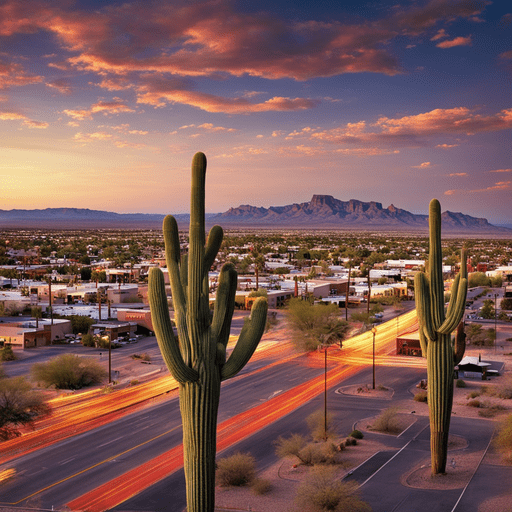
Land of the Grand Canyon: Arizona boasts the Grand Canyon, a breathtaking geological marvel and one of the Seven Natural Wonders of the World. Carved by the Colorado River, this awe-inspiring chasm showcases millions of years of Earth’s geological history, captivating visitors with its sheer size and mesmerizing beauty.
Cultural Tapestry: Arizona is a melting pot of cultures, with a significant Native American influence. It’s home to 22 federally recognized tribes, each with distinct traditions and histories. The state celebrates this diversity through events, museums, and festivals, providing a rich tapestry of cultural experiences for residents and visitors alike.
The Saguaro Cactus State: Recognized for its iconic symbol, the Saguaro cactus, Arizona is the only state in the U.S. where this towering, majestic plant grows naturally. These giant cacti, often reaching heights of 40 feet or more, contribute to the state’s unique and captivating desert landscape.
Quick Fun Facts About Arizona
- Became the 48th state of the USA in 1912.
- State flower is the saguaro cactus blossom.
- Home to the largest ponderosa pine forest globally.
- Ideal for stargazing with dark, quiet skies.
- Houses the world’s largest solar telescope at Kitt Peak National Observatory.
- Part of the historic Route 66.
- Grand Canyon is over a mile deep and 277 miles long.
- Features a natural meteorite impact crater you can visit.
- Known as “The Copper State” due to its mining history.
- Has the highest Native American population per capita in the U.S.
- Iconic gunfight at the O.K. Corral occurred in Tombstone.
- Birthplace of the chimichanga (deep-fried burrito).
- Imported the London Bridge to Lake Havasu City.
- Boasts the world’s largest antique rose bush in Tombstone.
- Home to one of the world’s largest solar power plants.
- Contains more parks and national monuments than any other state.
- Phoenix sees over 100 days per year with temperatures over 100°F (37.8°C).
- Bisbee was once the largest city between St. Louis and San Francisco.
- Saguaros, unique cacti, grow exclusively in the Sonoran Desert.
- Known for the “five C’s”: copper, cattle, cotton, citrus, and climate.
Also Read this: 40 Fascinating Fun Facts about Illinois
Grand Canyon Wonders
Discover the inspiring beauty and geological marvels of the Grand Canyon, a breathtaking wonder that leaves all who witness it in awe.
Arizona’s Grand Canyon, carved by the Colorado River, showcases millions of years of Earth’s geological history. It spans 277 miles in length and is, on average, a mile deep. Its immense size and intricate landscape offer a glimpse into the forces that shaped the planet.
Saguaro Cacti, The Desert Giants
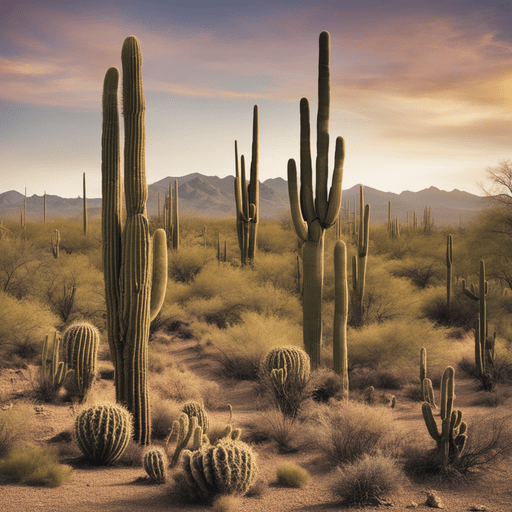
Explore the iconic Saguaro cacti, the towering giants of the Arizona desert, adding a unique character to the arid landscape.
The Saguaro cactus, the symbol of Arizona, can reach towering heights of 40 to 60 feet. It’s a slow-grower, taking up to 75 years to develop its first arm. This remarkable plant provides shelter and sustenance to various desert wildlife.
Desert Botanical Garden
Delve into the Desert Botanical Garden, a haven of diverse desert flora, showcasing the remarkable plant life that thrives in this challenging environment.
The Desert Botanical Garden in Phoenix hosts over 4,000 plant species, highlighting the beauty and adaptability of desert flora. It’s a hub for education and conservation, aiming to protect and preserve desert plants and their ecosystems.
Petrified Forest National Park
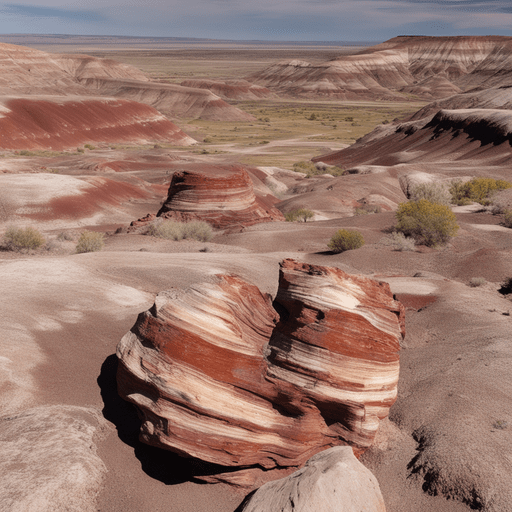
Unearth the mysteries of the Petrified Forest National Park, a site where ancient trees turned to stone, preserving the Earth’s history within its colorful petrified wood.
The Petrified Forest holds the remains of ancient trees that lived over 200 million years ago. Wood in this park has fossilized into colorful stone, displaying a fascinating blend of minerals and revealing a window into prehistoric times.
Monument Valley’s Timeless Beauty
Admire the timeless beauty of Monument Valley, a landscape made famous by its appearance in numerous movies and ads, showcasing the quintessential American West.
Monument Valley, a region on the Arizona-Utah border, boasts iconic sandstone buttes and mesas, making it a sought-after location for filmmakers. Its stunning vistas and distinctive rock formations have made it a symbol of the American West in popular culture.
Havasu Falls: Nature’s Masterpiece
Discover Havasu Falls, a hidden gem within the Grand Canyon, presenting an oasis of stunning turquoise waters and vibrant red rocks.
Havasu Falls, one of the many waterfalls in the Havasupai Indian Reservation, offers a surreal oasis amidst the rugged Grand Canyon. The cascading turquoise water, contrasting with the red canyon walls, creates a scene of extraordinary natural beauty.
The Apache Trail
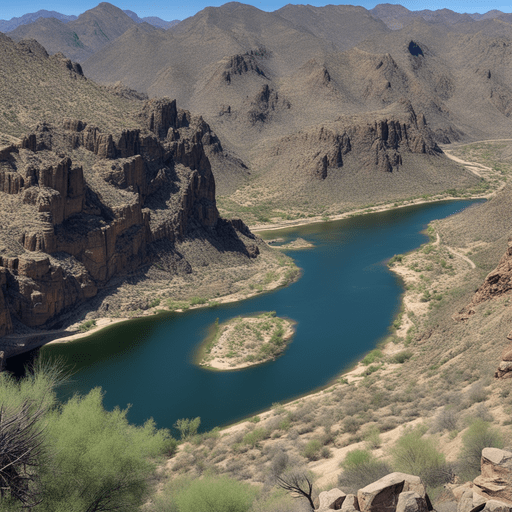
Embark on a journey along the Apache Trail, a historic route that winds through the Superstition Mountains, offering breathtaking vistas and a taste of the Old West.
The Apache Trail, a scenic byway, takes travelers through stunning desert landscapes and rugged mountains. Originally a stagecoach route, it still provides a glimpse of the Arizona of the past, with its unpaved sections and glimpses into old mining towns.
Meteor Crater: A Cosmic Scar
Uncover Meteor Crater, a massive impact site in the Arizona desert, bearing witness to a cosmic collision from thousands of years ago.
The Meteor Crater, also known as Barringer Crater, was formed around 50,000 years ago when a meteorite struck Earth. This well-preserved impact site offers insights into Earth’s geological and astronomical history, making it a significant scientific attraction.
Arizona’s Wild West Heritage
Step back in time and immerse yourself in Arizona’s Wild West heritage, exploring ghost towns and reliving the days of cowboys and outlaws.
Arizona’s Wild West history is alive in its ghost towns like Tombstone and Jerome. These towns preserve the essence of the 1800s, giving visitors a taste of the rough and tumble days of cowboys, miners, and shootouts.
Taliesin West: Frank Lloyd Wright’s Masterpiece
Visit Taliesin West, the winter home of architect Frank Lloyd Wright, a testament to his design brilliance and innovation in desert architecture.
Taliesin West, Frank Lloyd Wright’s former winter residence and architectural school, showcases his organic architecture principles. The building seamlessly blends with the desert landscape, demonstrating Wright’s genius in integrating design with nature.
Route 66: The Mother Road
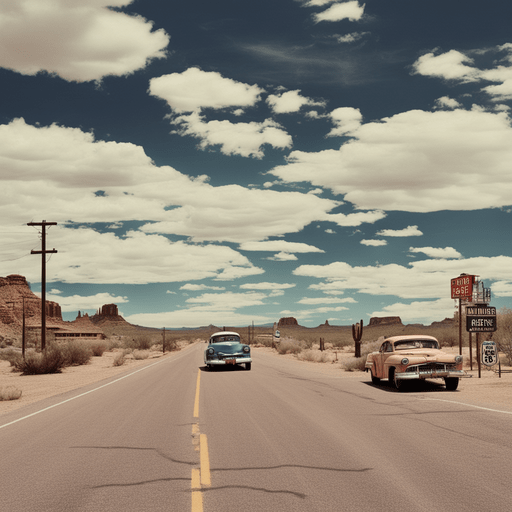
Follow the historic Route 66 through Arizona, the iconic highway that epitomizes the American road trip experience and offers a glimpse into the past.
Route 66, also known as the “Mother Road,” traverses through Arizona, embodying the spirit of adventure and nostalgia. It’s a route that has become legendary, symbolizing the quintessential American road trip experience from Chicago to Santa Monica.
Arizona’s Five Cs
Learn about Arizona’s Five Cs – Copper, Cattle, Cotton, Citrus, and Climate – which have historically defined the state’s economy and culture.
Arizona’s economy historically relied on the Five Cs: Copper mining, Cattle ranching, Cotton farming, Citrus cultivation, and Climate tourism. These elements have shaped the state’s identity and played pivotal roles in its development and growth.
The Hoover Dam: An Engineering Marvel
Marvel at the engineering feat of the Hoover Dam, an iconic structure on the Arizona-Nevada border, taming the mighty Colorado River and providing vital resources.
The Hoover Dam, a marvel of engineering and architecture, provides hydroelectric power and manages the Colorado River. Its construction during the Great Depression was a monumental achievement, providing water and electricity to the region and serving as a symbol of American ingenuity.
Kartchner Caverns: Nature’s Subterranean Beauty
Explore Kartchner Caverns, a living cave system with awe-inspiring formations that reveal the Earth’s hidden underground beauty.
Kartchner Caverns, a living cave system, features intricate stalactites, stalagmites, and rare helictites. It’s one of the few living caves in the world. Where ongoing geological processes continue to shape the stunning formations, captivating those who venture below the surface.
Arizona’s Native American Heritage
Celebrate Arizona’s rich Native American heritage, showcasing diverse cultures, traditions, and artistry deeply rooted in the state’s history.
Arizona is home to 22 Native American tribes, each with distinct cultures and traditions. Their art, dance, and rituals reflect a deep connection to the land, providing a glimpse into the rich tapestry of indigenous cultures that have thrived in the region for centuries.
Biosphere 2: A World Under Glass
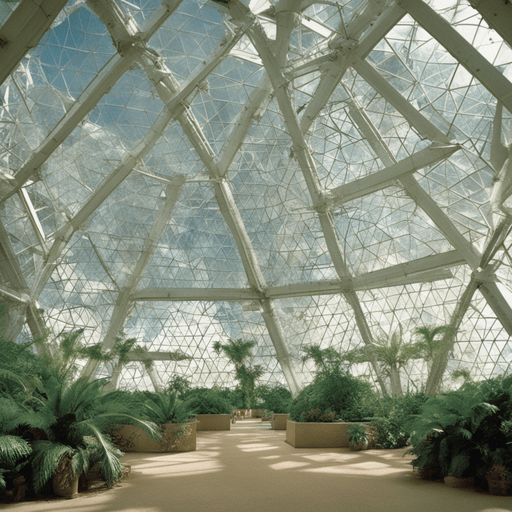
Unveil Biosphere 2, a unique research facility in Arizona simulating different biomes, providing insight into sustainable life in enclosed ecosystems.
Biosphere 2, an experiment in closed ecological systems, once housed researchers in a self-sustaining environment. It aimed to explore sustainable living, studying interactions between humans, technology, and nature within a controlled, enclosed ecosystem.
Astronomy at Kitt Peak National Observatory
Peer into the cosmos at Kitt Peak National Observatory. A premier astronomical research center, offering breathtaking views of the night sky.
Kitt Peak National Observatory, situated on a mountaintop near Tucson, is a hub for astronomical research and public outreach. Visitors can observe celestial wonders through powerful telescopes, gaining a deeper understanding of the cosmos.
Oak Creek Canyon: Nature’s Palette
Admire the vibrant hues of Oak Creek Canyon. A breathtaking gorge that displays nature’s palette in its stunning rock formations and lush vegetation.
Oak Creek Canyon, a scenic marvel near Sedona, showcases an array of colors, especially during autumn. The canyon’s vibrant foliage, towering cliffs, and crystal-clear creek create a picturesque landscape that enchants visitors year-round.
The London Bridge in Arizona
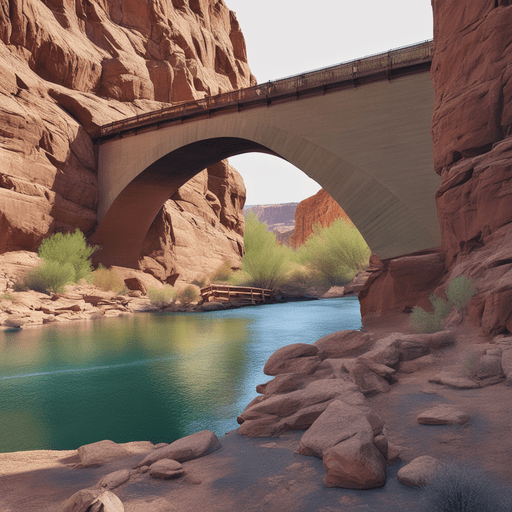
Learn about the surprising tale of London Bridge, transplanted to Lake Havasu City. Arizona, becoming an unexpected symbol of architectural history.
London Bridge, purchased and moved to Arizona from London in 1967. Now stands as an unexpected landmark in Lake Havasu City. Its relocation was a marketing coup, drawing visitors to the desert oasis and serving as a testament to human engineering and determination.
Arizona’s Rattlesnake Festival
Discover the unique Rattlesnake Festival, an annual event in Arizona celebrating the state’s unique fauna while promoting awareness and conservation.
The Rattlesnake Festival, an educational event, aims to dispel myths and promote conservation of rattlesnakes. It provides an opportunity for people to learn about these creatures. Their role in the ecosystem, and how to coexist safely with them in the region.
FAQs
A: The Cactus Wren holds that honor.
A: The Grand Canyon, a natural wonder, is found there.
A: It’s known as “The Town Too Tough to Die” and was the site of the famous Gunfight at the O.K. Corral.
A: It’s often called the “Grand Canyon State.”
A: Phoenix, known for scorching summer temperatures, is often called the “Valley of the Sun.”